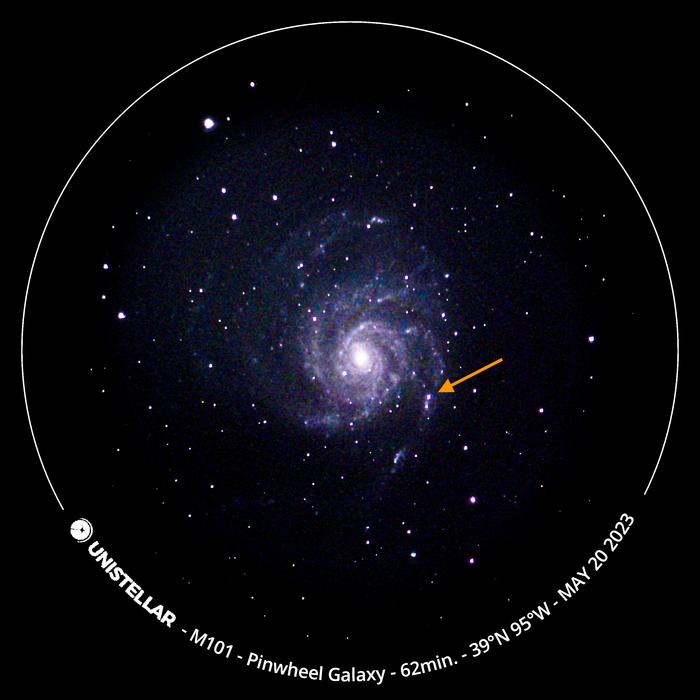Super-close supernova captivates record number of citizen scientists
"It is really incredible what this citizen science network can do. This was the closest supernova of the last decade, and observers took full advantage of the special occasion."

The closest cosmic explosion to Earth in the last 10 years became a record breaker for the Search for Extraterrestrial Intelligence Institute (SETI).
The supernova, designated (SN) 2023ixf, was first spotted on May 19, 2023, by Japanese amateur astronomer Koichi Itagaki. Just an hour after this manifestation, amateur astronomers taking part in SETI and Unistellar's Cosmic Cataclysms program were on the case.
A record number of observers, including citizen scientists in the form of amateur astronomers, came together to collect data from a supernova that took place in the Pinwheel Galaxy, a spiral galaxy located approximately 21 million light-years from Earth.
With the data, scientists could better understand the behavior of this class of supernovas known as Type II, cosmic explosions that occur when massive stars run out of fuel for nuclear fusion and can no longer protect themselves against gravitational collapse.
Related: What is a supernova?

"It is really incredible what this citizen science network can do," SETI Institute researcher Lauren Sgro said in a statement. "This was the closest supernova of the last decade, and observers took full advantage of the special occasion. They jumped on target as soon as possible and kept observing, which allowed us to witness the full potential of this program."
The effort involved 123 dedicated amateur astronomers making 252 observations with 115 telescopes following how light from the supernova changed over time, first seeing its escalating brightness and then tracking its gradual fading. This allowed the SETI scientists to build a profile for the supernova that astronomers called a light curve, a measurement of its brightness over time.
Get the Space.com Newsletter
Breaking space news, the latest updates on rocket launches, skywatching events and more!
And the story isn't over for (SN) 2023ixf. The supernova is expected to remain visible until at least August 2023, and while this is the case, the amateur astronomers of the Cosmic Cataclysms program will continue to monitor its progress.
Leveraging the power of amateur astronomers
The Cosmic Cataclysms science program is a joint undertaking between the SETI Institute and Unistellar which is funded by the Richard Lounsbery Foundation and the Gordon and Betty Moore Foundation. The program lets citizen scientist astronomers study and collect data from cataclysmic events and rapidly changing or "transient" events such as supernovas and gamma-ray bursts.
Participants receive real-time alerts when transient events are spotted, resulting in the rapid initiation of observing campaigns such as the one seen for (SN) 2023ixf. As they monitor the increase in brightness and subsequent fading of cataclysmic events, volunteers help scientists to gather vital details about the objects behind these violent and powerful celestial occurrences and their impact on surrounding gas and dust, known as interstellar material.
The program will get a major boost next year when the Vera C. Rubin Observatory in Chile commences operations, allowing the Unistellar network of citizen astronomers to team up with other crews of astronomers and professional astronomers to study transient events.
The team's research was published in the journal The Research Notes of the AAS.
Join our Space Forums to keep talking space on the latest missions, night sky and more! And if you have a news tip, correction or comment, let us know at: community@space.com.

Robert Lea is a science journalist in the U.K. whose articles have been published in Physics World, New Scientist, Astronomy Magazine, All About Space, Newsweek and ZME Science. He also writes about science communication for Elsevier and the European Journal of Physics. Rob holds a bachelor of science degree in physics and astronomy from the U.K.’s Open University. Follow him on Twitter @sciencef1rst.









